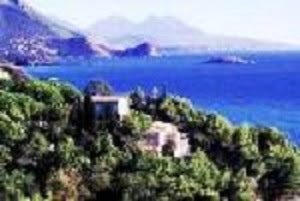Boat Excursions
The Phlegraean Fields there is a place where the fields burn, and vapors and mud come out of the land whose level is constantly rising and lowering; where volcanoes like 133 meter high Monte Nuovo have emerged overnight. Hence, the name Campi Flegrei coined by the Greeks who first saw it 2800 years ago, assuming that Titans were imprisoned underground and their breathing caused the bradyseism phenomenon of the earth’s crust.
In Pozzuoli you can see the remains of the Macellum and the
underground Roman city of Rione Terra by simply entering a 17th Century
palazzo. Bradyseism is also responsible for the sinking of the Roman
Imperial city of Baia. Just across the bay of Pozzuoli are the Baia Castle and
Miseno, home port of Rome’s navy; it is from here that Pliny the Elder sailed
in a vain attempt to save Pompeii. Your tour ends where it began: Cumae as
Southern Italy and Magna Grecia acted as catalysts to bring Greek culture to
Rome.
Western Civilization began right here with the Cuman Sybil and its Myths
Sorrento Capri and Positano your boat leaves the port of Sorrento and reaches across to
circumnavigate and visit the nearby island of Capri. Then it hugs the Amalfi
Coast side of the Sorrento peninsula, and an opportunity to swim in crystal
clear waters, on the way to the resort of Positano. This very relaxing day can
only end with dinner based on local food and wine specialties at a
restaurant on the beach.
Reduce Transit Times and Travel Cost on Your Next Trip
Cilento all the
ingredients that visitors to Italy look for can be found here: pristine
beaches, a national park under Unesco’s protection, coastal and inland
panoramas and a superb culinary tradition. Coastal, hilly, and mountainous
landscapes showing vestiges of man`s ancient presence; Greek colonizers landed
in the 7th century BC and founded Posidonia, the Roman Paestum. Of
major interest:
Paestum is
surrounded by well-kept 5 Km long Roman walls and three famous and imposing VI
and V century BC Doric temples, the Archaeological Museum and The Diver fresco.
Velia was
founded circa 540 BC. Archaeological excavations have gradually unveiled the
remains of this town, the amphitheater and the Porta Rosa (Pink Door).
Cilento Coast if you can spare an extra day, your boat can take you further down the Cilento coast with stops along the way at quaint fishing villages in the company of a breathtaking coastline, all the way down to Palinuro, named after Ulysses’ helmsman on the voyage back to Ithaca.
Cilento Coast if you can spare an extra day, your boat can take you further down the Cilento coast with stops along the way at quaint fishing villages in the company of a breathtaking coastline, all the way down to Palinuro, named after Ulysses’ helmsman on the voyage back to Ithaca.
Travel
Experiences in Naples Bay and the Amalfi Coast










